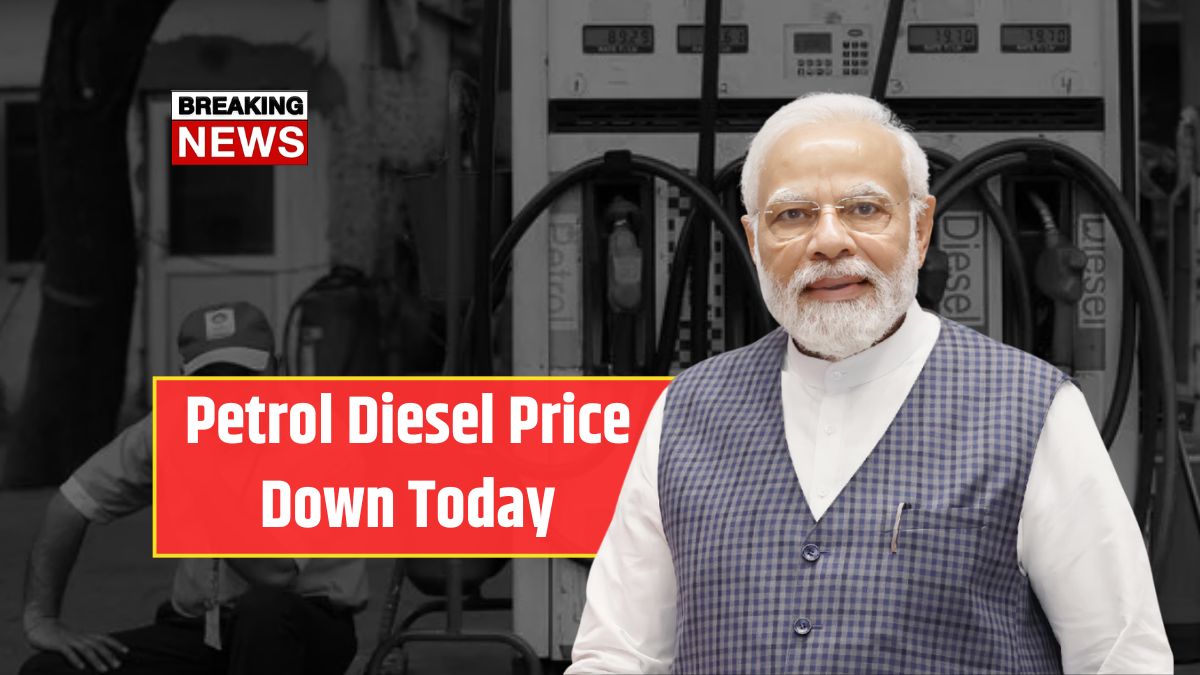Petrol and Diesel Price – There’s some good news for your wallet. Petrol and diesel prices have finally come down across most parts of India. After months of rising or stable fuel rates, the prices were reduced on April 21, 2025. The cut is giving a much-needed break to everyone from daily commuters to transport companies and farmers.
This price drop follows a steady dip in global crude oil rates and a few tax adjustments by the Indian government. According to oil companies, both petrol and diesel prices have gone down by nearly 50 paise per litre. While it may not seem like a huge change at first, the combined effect across transportation, logistics, and households is pretty big.
Let’s take a closer look at what’s behind this price cut, how it affects your day-to-day life, and where prices stand in your city.
Why Did Fuel Prices Go Down?
A couple of things worked together to bring this drop in rates. First, international crude oil prices have been sliding down for the past few weeks. The cost per barrel fell below 80 dollars, which made fuel imports cheaper for India.
Second, the central government tweaked the excise duties, and a few state governments also reduced VAT on petrol and diesel. These tax changes were meant to control inflation and ease pressure on the middle class.
Also, oil companies have revised their pricing methods to align more with global market trends. Domestic demand has stayed stable, and there’s been no big spike in fuel usage, which helped keep things under control.
What Are the New Petrol Prices in Cities?
Here’s a quick look at what petrol costs now in major cities after the rate cut:
- Delhi – ₹94.77 per litre
- Mumbai – ₹103.50 per litre
- Chennai – ₹101.03 per litre
- Kolkata – ₹105.01 per litre
- Bengaluru – ₹102.86 per litre
- Hyderabad – ₹107.46 per litre
- Lucknow – ₹94.65 per litre
- Ahmedabad – ₹94.49 per litre
The price drop is pretty consistent, so no matter where you are, you’re likely paying a bit less at the pump today.
How Will This Affect Daily Life?
This change is expected to make a noticeable difference, especially for those who rely on fuel for daily transport or work. People driving to work, students commuting by bike, and families going on trips will all see lower monthly fuel bills.
Business owners who rely on transport—whether it’s delivery trucks, auto-rickshaws, or taxis—will also save money. E-commerce firms and courier services might pass on these savings to customers or use them to improve their profit margins.
In rural areas, farmers who depend on diesel for tractors and irrigation will benefit too. This drop could reduce their operational costs right before the kharif season kicks in.
Diesel Rates After the Cut – Here’s the Latest
Here’s how diesel prices look in some key cities now:
- Delhi – ₹87.67 per litre
- Mumbai – ₹90.03 per litre
- Chennai – ₹92.39 per litre
- Kolkata – ₹91.82 per litre
- Bengaluru – ₹80.99 per litre
- Hyderabad – ₹95.70 per litre
- Jaipur – ₹89.93 per litre
- Chandigarh – ₹82.45 per litre
Since diesel is widely used for transporting goods and in agriculture, the price drop brings solid relief to the supply chain and farming communities.
Tips to Make the Most of These Lower Prices
If you want to get the most out of this drop in fuel rates, here are a few simple things you can do:
- Fill up your tank while prices are still low. Rates can change every day depending on the market.
- Use apps or websites that show live fuel prices in your city to plan your fuel runs.
- If you’re planning a road trip or have a long commute, now’s a good time to travel.
- Small business owners can consider reducing delivery fees or plan bulk transport to save on fuel expenses.
What Does This Mean for the Economy?
Lower fuel prices can have a domino effect on the economy. When transporting goods becomes cheaper, the prices of vegetables, groceries, and daily essentials can stabilize or even come down. This helps control inflation and gives consumers a little breathing room.
Looking ahead, whether fuel prices stay low will depend on a few key factors—global oil trends, currency exchange rates, and any new government tax decisions. Experts believe that if crude prices remain stable and the monsoon season supports farming, we could enjoy steady fuel prices for the next few months.
For now, though, it’s a welcome change—and a small but meaningful win for anyone feeling the pinch of high costs lately.






